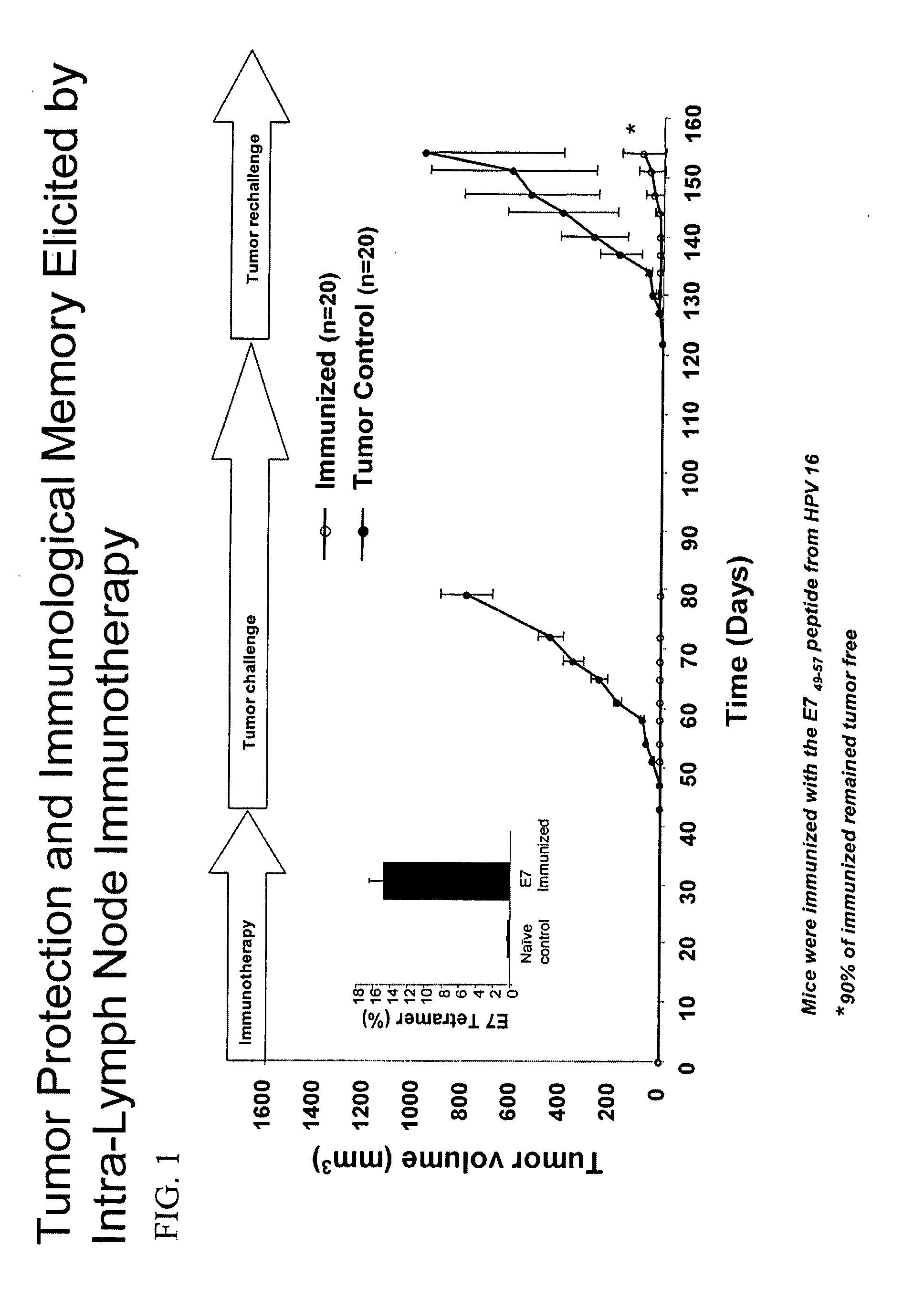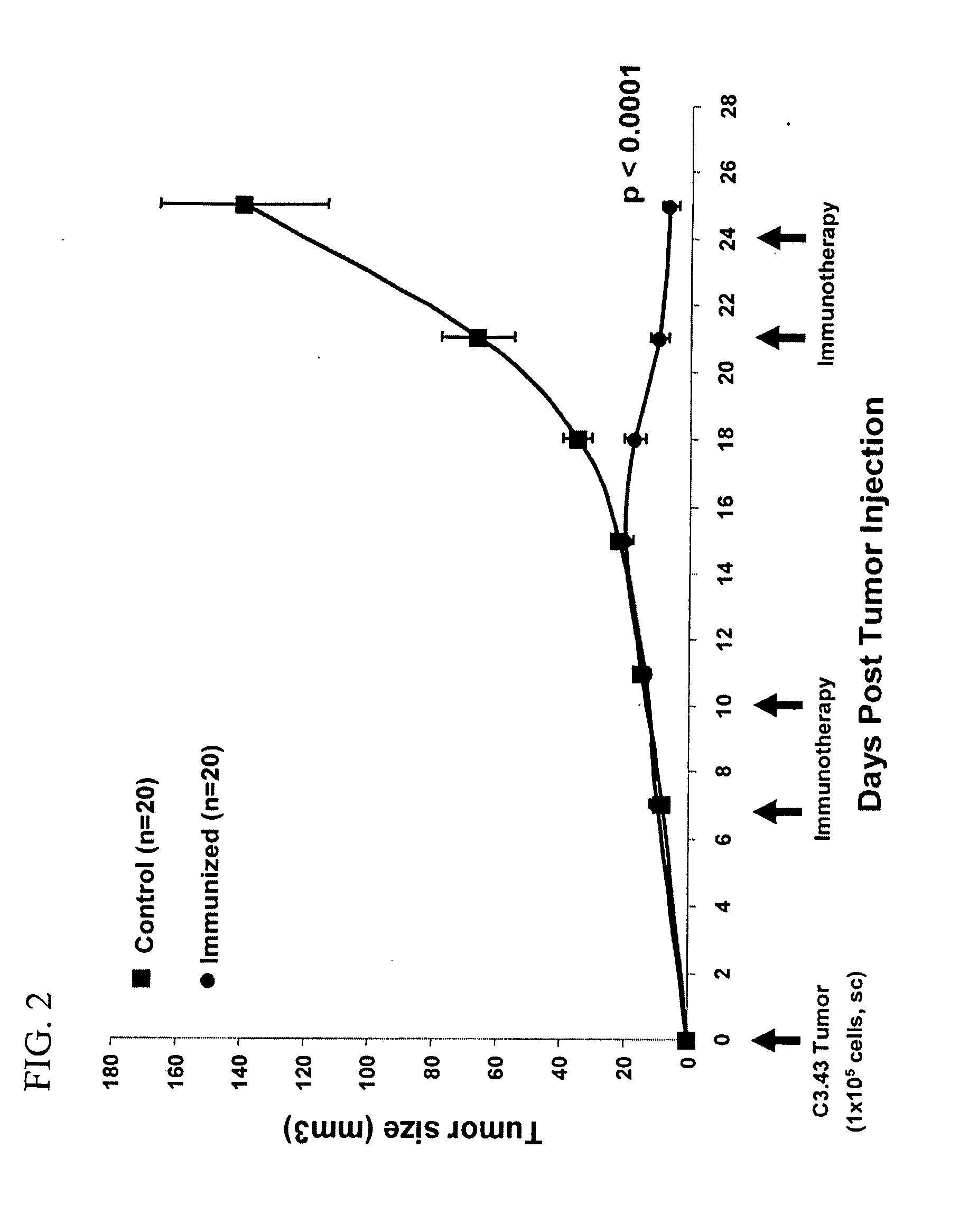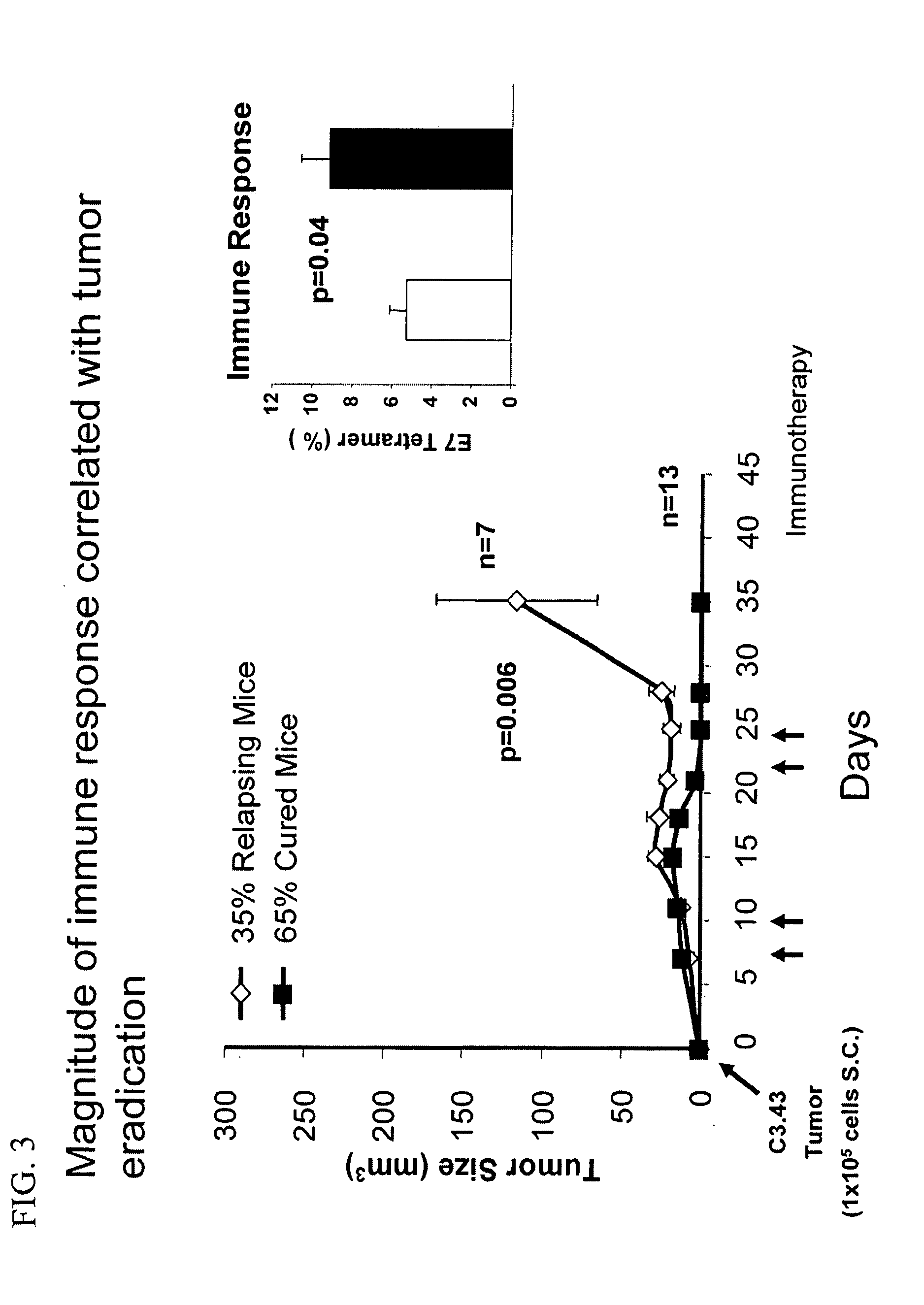Methods to elicit, enhance and sustain immune responses against MHC class I-restricted epitopes, for prophylactic and therapeutic purposes
a technology of mhc class i and immune responses, applied in the field of conjugated immunotherapeutic and chemotherapeutic regimens, to achieve the effect of promoting tumoral inflammation and enhancing treatment effectiveness
- Summary
- Abstract
- Description
- Claims
- Application Information
AI Technical Summary
Benefits of technology
Problems solved by technology
Method used
Image
Examples
example 1
Tumor Regression Elicited by Targeted Lymph Node Immunotherapy with an HPV-16 (E7) Peptide
[0144] Tumor regression elicited by targeted lymph node immunotherapy was assessed in an HPV-16 tumor model, by in vivo loading of lymph node APCs with the E749-57 peptide in combination with an adjuvant acting via TLRs (synthetic dsRNA), to elicit a potent MHC class I-restricted immunity.
[0145] Mice bearing human papillomavirus type 16-transformed tumors received intranodal injections of a MHC class I HPV-16 E749-57 peptide co-injected with double stranded RNA (polyIC) as an adjuvant on day seven following subcutaneous tumor (105 cells) challenge (FIG. 1). The majority of immunized mice (60%) were completely cured with 7 out of 20 showing complete protection (CP) and 5 out of 20 forming a measurable tumor which completely responded (CR) following immunotherapy on Days 7, 10, 21, and 24 (FIG. 2; Table 1). One animal demonstrated a partial response (PR) resulting in a tumor that was 32% smalle...
example 2
Increased Frequency of T-Regulatory Cells in Progressive Disease
[0148] To assess the role of T-regulatory cells in animals that failed to respond to immunotherapy, mice bearing human papillomavirus type 16-transformed tumors received intranodal injections of a MHC class I HPV-16 E749-57 peptide co-injected with double stranded RNA (polyIC) as an adjuvant on days 21, 25, 35, and 39 following subcutaneous tumor (105 cells) challenge. Control mice received either poyIC or saline.
[0149] Additionally, to determine the potential tolerance of HPV-specific tumor infiltrating lymphocytes (TILs) to the immuno-modulatory effects of cyclophosphamide, cyclophosphamide was employed in combination with the HPV-16 E749-57 peptide immunotherapeutic strategy disclosed in Example 1. Cyclophosphamide is an alkylating chemotherapeutic agent that has been shown to have cytotoxic as well as immuno-modulatory effects, such as depletion of CD4+CD25+ regulatory T cells and enhancement of antigen specific C...
example 3
Administration of a Chemotherapeutic Agent Prior to the Immunotherapeutic Regimen
[0152] Additional studies are conducted wherein non-limiting chemotherapeutic agents such as, for example, but not limited to, cyclophosphamide, gemcitabine, fludarabine and doxorubicin are employed to selectively deplete T-regulatory cells to enhance immune responsiveness prior to immunotherapy. Using a similar strategy as disclosed in Example 1 above, mice bearing human papillomavirus type 16-transformed tumors first received immunomodulatory doses (low doses) of a chemotherapeutic agent followed at various intervals by intranodal injections of a MHC class I HPV-16 E749-57 peptide co-injected with double stranded RNA (polyIC) as an adjuvant. Mice are then assessed for regression of tumor.
[0153] Dosing is according to currently approved medical standards as are known to one of ordinary skill in the art. The therapeutic regimen, chemotherapy followed by lymph node targeted immunotherapy, is optionally...
PUM
| Property | Measurement | Unit |
|---|---|---|
| Time | aaaaa | aaaaa |
| Immunogenicity | aaaaa | aaaaa |
| Chemotherapeutic properties | aaaaa | aaaaa |
Abstract
Description
Claims
Application Information
 Login to View More
Login to View More - R&D
- Intellectual Property
- Life Sciences
- Materials
- Tech Scout
- Unparalleled Data Quality
- Higher Quality Content
- 60% Fewer Hallucinations
Browse by: Latest US Patents, China's latest patents, Technical Efficacy Thesaurus, Application Domain, Technology Topic, Popular Technical Reports.
© 2025 PatSnap. All rights reserved.Legal|Privacy policy|Modern Slavery Act Transparency Statement|Sitemap|About US| Contact US: help@patsnap.com



